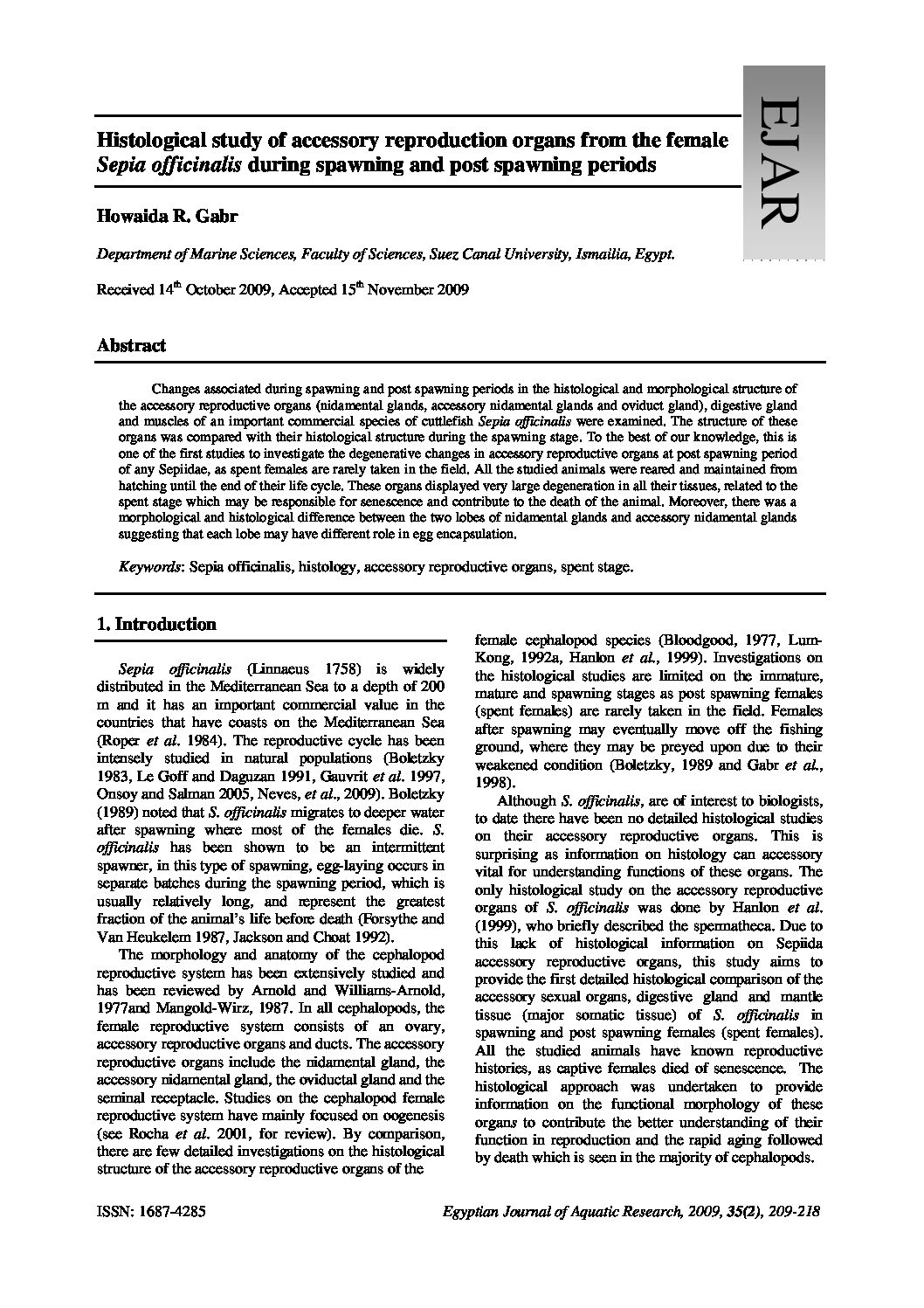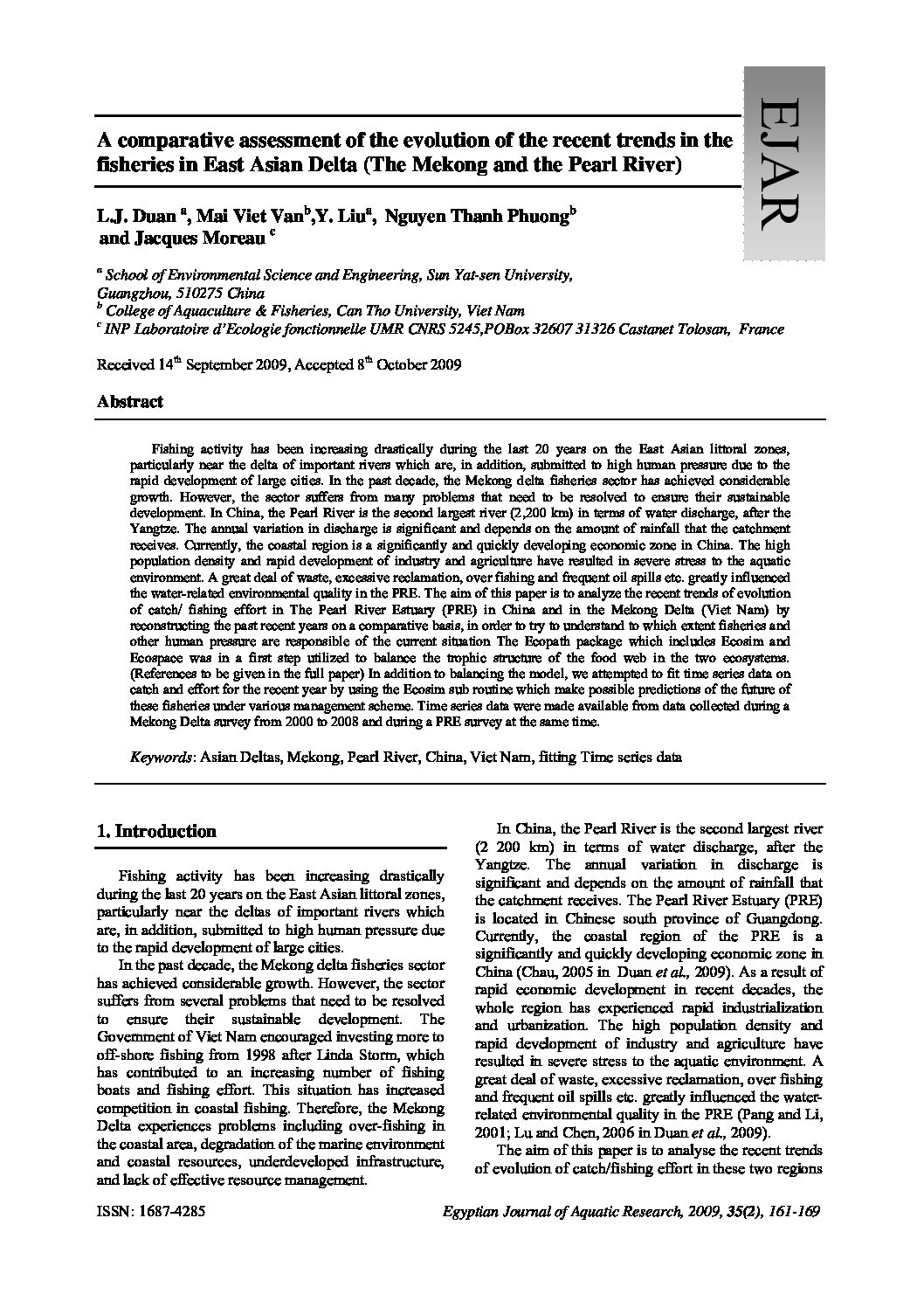Categories
vol-35Histological study of accessory reproduction organs from the female
Sepia officinalis during spawning and post spawning periods
Howaida R. Gabr
Department of Marine Sciences, Faculty of Sciences, Suez Canal University, Ismailia, Egypt.
Received 14th October 2009, Accepted 15th November 2009
Abstract
Changes associated during spawning and post spawning periods in the histological and morphological structure of
the accessory reproductive organs (nidamental glands, accessory nidamental glands and oviduct gland), digestive gland
and muscles of an important commercial species of cuttlefish Sepia officinalis were examined. The structure of these
organs was compared with their histological structure during the spawning stage. To the best of our knowledge, this is
one of the first studies to investigate the degenerative changes in accessory reproductive organs at post spawning period
of any Sepiidae, as spent females are rarely taken in the field. All the studied animals were reared and maintained from
hatching until the end of their life cycle. These organs displayed very large degeneration in all their tissues, related to the
spent stage which may be responsible for senescence and contribute to the death of the animal. Moreover, there was a
morphological and histological difference between the two lobes of nidamental glands and accessory nidamental glands
suggesting that each lobe may have different role in egg encapsulation.
Keywords: Sepia officinalis, histology, accessory reproductive organs, spent stage.







